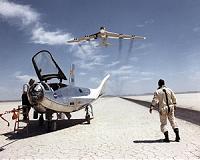 |
New Orleans LA (SPX) Feb 11, 2011 The Lockheed Martin Orion team shipped out the first Orion crew module spacecraft structure from NASA's Michoud Assembly Facility in New Orleans, La. The spacecraft is headed to Lockheed Martin's Denver, Colo., facilities where it will undergo a series of rigorous tests to confirm Orion's ability to safely fly astronauts through all the harsh environments of deep space exploration missions. Soon after the spacecraft arrives in Denver, it will be integrated with the heat shield and thermal protection backshell before undergoing environmental testing. This crew module will also go through a series of simulated landing scenarios at Langley's new Hydro Impact Basin. The Langley facility will be used to test, validate and certify water landings for all human-rated spacecraft for NASA. "This is a significant milestone for the Orion project and puts us on the right path toward achieving the President's objective of Orion's first crewed mission by 2016," said Cleon Lacefield, Lockheed Martin vice president and Orion program manager. "Orion's upcoming performance tests will demonstrate how the spacecraft meets the challenges of deep-space mission environments such as ascent, launch abort, on-orbit operations, high-speed return trajectory, parachute deployment, and water landings in a variety of sea states." Built to spaceflight specifications, this Orion ground test vehicle has already validated advanced production processes, equipment and tools required to manufacture the Orion crew module space flight hardware. Data collected from the testing and pathfinding operations will be incorporated to enhance design, requirements, tooling, processes, inspection and test that will ultimately result in a safe, reliable and affordable human-rated space exploration vehicle. Orion has passed critical human-rating milestones, including Orion's flawless flight test of its launch abort system and the successful phase one safety review that validated Orion meets many of NASA's stringent requirements for safe human spaceflight. Lockheed Martin is the prime contractor to NASA for the Orion crew exploration vehicle - the nation's next generation spacecraft that features advanced technologies for more complex and challenging human space exploration missions throughout our solar system. The Orion spacecraft will be comprised of a crew module for crew and cargo transport; a service module for propulsion, electrical power and fluids storage; a spacecraft adapter for securing it to a launch vehicle, and a launch abort system that will significantly improve crew safety. Lockheed Martin leads the Orion industry team which includes major subcontractors as well as a nationwide network of minor subcontractors and small businesses. In addition, Lockheed Martin contracts with hundreds of small and disadvantaged business suppliers across the United States through an expansive supply chain network.
Share This Article With Planet Earth
Related Links Orion at Lockheed Martin Space Tourism, Space Transport and Space Exploration News
 Lifting To Space
Lifting To SpaceMoffett Field CA (SPX) Feb 04, 2011 NASA began flight-testing experimental lifting bodies at Edwards in the 1960s, following evolution of the concept earlier in the 1950s. A lifting body is a fuselage that generates lift at the expense of higher drag. It uses a modification of the "blunt body" principle developed by H. Julian Allen at NASA's Ames Research Center. Allen had showed in the early 1950s that a blunt body produced ... read more |
|
| The content herein, unless otherwise known to be public domain, are Copyright 1995-2010 - SpaceDaily. AFP and UPI Wire Stories are copyright Agence France-Presse and United Press International. ESA Portal Reports are copyright European Space Agency. All NASA sourced material is public domain. Additional copyrights may apply in whole or part to other bona fide parties. Advertising does not imply endorsement,agreement or approval of any opinions, statements or information provided by SpaceDaily on any Web page published or hosted by SpaceDaily. Privacy Statement |